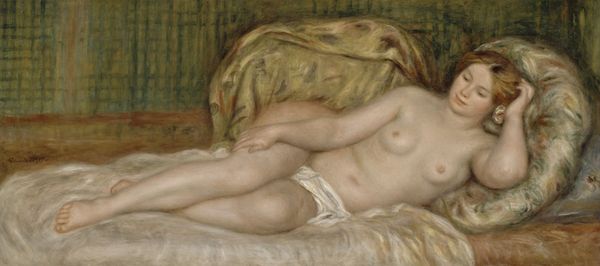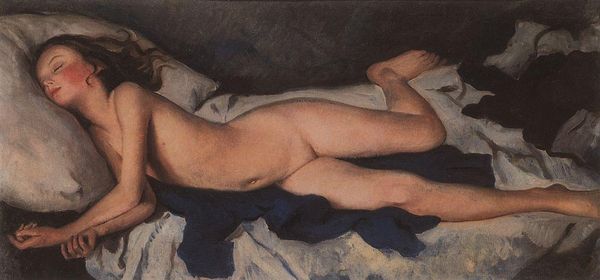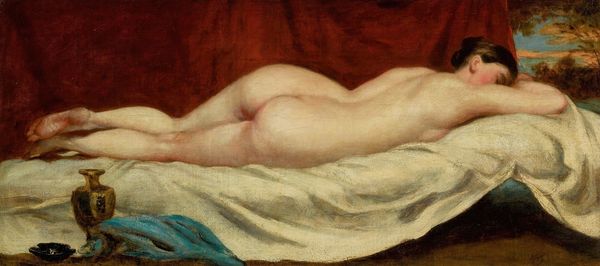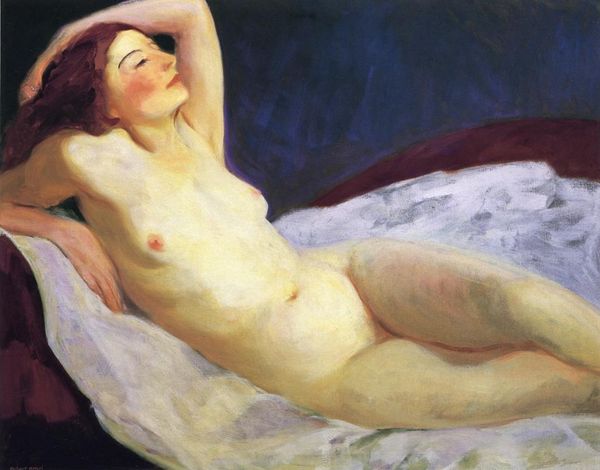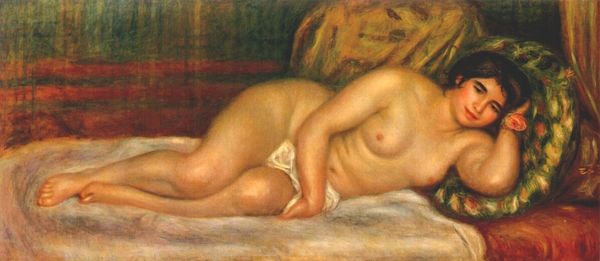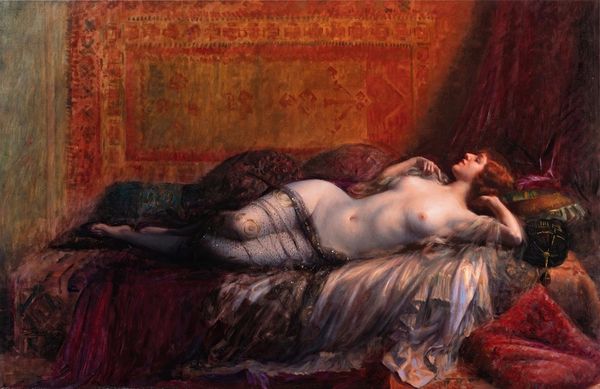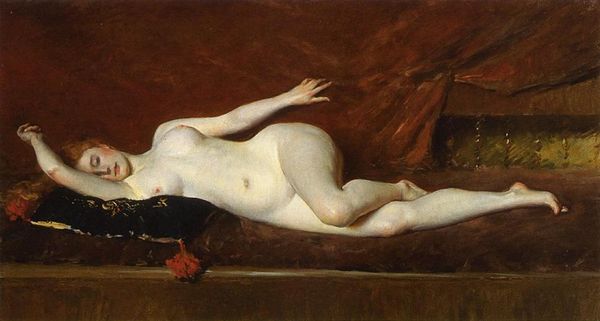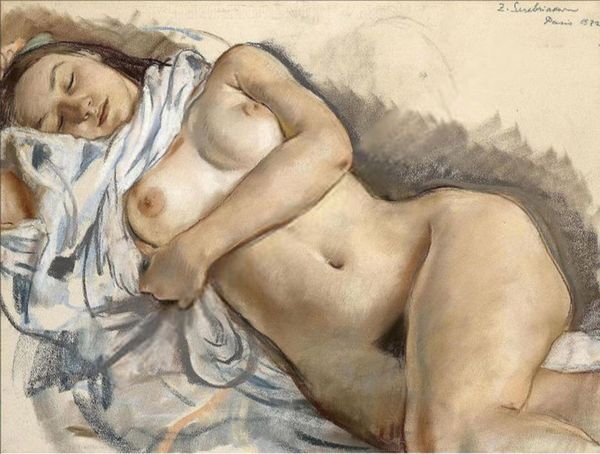
oil-paint
#
portrait
#
oil-paint
#
oil painting
#
romanticism
#
portrait drawing
#
nude
Copyright: Public domain
Curator: I'm struck by the peaceful atmosphere emanating from this painting. The soft brushstrokes and warm, muted tones create a feeling of tranquility. Editor: And a sense of vulnerability, I think. We're looking at a nude, titled "Dream" attributed to Károly Lotz. Its creation date is unfortunately unknown. The artist uses oil paint to render a sleeping woman, lost in repose. It would be important to know more about who Lotz chose to represent and whether he empowered this woman in his presentation or followed conventional depictions of idealized, passive, female forms. Curator: Interesting point. The history of the nude in art is undoubtedly loaded, especially concerning the power dynamics at play. From an iconographic standpoint, sleeping figures often represent a kind of inner world, a connection to the subconscious. The symbolism of sleep throughout history connects to themes of both peace and vulnerability. Editor: Exactly. Is the 'dream' she embodies reflective of societal ideals imposed upon women, a peaceful retreat necessitated by oppressive realities, or is she finding liberation within it? How does this imagery resonate with contemporary ideas about gender and autonomy? Curator: I do think the way the figure is rendered--reclining, seemingly unaware-- could invite a dialogue around consent and representation. However, the draped fabric introduces some complexities. It partially covers and conceals the nude body. The question becomes, is this covering modesty, or an erotic accentuation of what remains unseen? Editor: Well, considering historical norms and artistic conventions, the veil serves both to titillate and reinforce social norms about women’s bodies. In some contexts, veiling could even signify status or be connected to ritual or tradition. So in examining a dreamlike image we are asking, whose dream is it? The sleeping figure? Or perhaps it’s Lotz projecting fantasies or commentary about women within the larger social sphere. Curator: Right. We are layering all of that. Editor: We might want to know about the models themselves. Considering intersectional paradigms can help us question conventional, singular notions about representation. It reveals that representation is about so much more than just appearance, it's also about lived experiences. Curator: It definitely makes me look at "Dream" with a heightened awareness, making me conscious of both the aesthetic qualities and its potential social narratives. Editor: Agreed. These artistic explorations push viewers to engage with cultural memories, social constructions, and their impact, which leads to profound self-reflection.
Comments
No comments
Be the first to comment and join the conversation on the ultimate creative platform.



